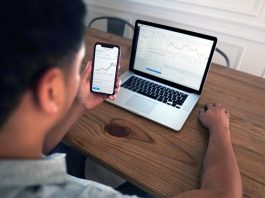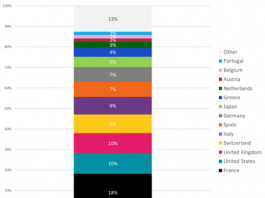Smartphones will Influence US$689 Billion in Retail Store Sales by 2016
Deloitte defines the mobile influence factor in retail sales
Mobile impact on store sales exceeds the value of mobile commerce
Smartphones currently influence 5.1 percent of annual retail store sales, translating into US$159 billion in forecasted sales for 2012, according to new Deloitte research. For the first time in the industry, the in-depth study measures the “mobile influence factor,” or impact of smartphones on in-stores sales.
Deloitte anticipates mobile’s influence, based on consumers’ smartphone use, will grow to represent 19 percent of total store sales by 2016, amounting to US$689 billion in mobile-influenced sales. By comparison, direct mobile commerce sales will pass the $30 billion mark by that time, according to industry estimates.
“Mobile devices’ influence on retail store sales has passed the rate at which consumers purchase through their devices today,” said Santino Saguto, partner in charge for the Telecommunications, Media and Technology (TMT) industry, Deloitte Middle East. “Consumers’ store-related mobile activities are contributing to – not taking away from – in-store sales, and Deloitte research indicates that smartphone shoppers are 14 percent more likely to convert and make a purchase in the store than non-smartphone users. This means that mobile is an important tool for retailers to incrementally drive traditional in-store sales, strengthening the relationship between retailer and consumer to increase engagement and loyalty.”
In the Middle East, while e-commerce adoption remains low, online sales have increased rapidly in the past two years and are expected to continue to grow fast due to the region’s demographics. According to the fourth Arab Media Outlook Report (AMO), in most Arab markets in the region, except the UAE, ecommerce adoption remains below 5% of the population with transactions mostly focused on ticketing (flights, concerts etc.). However the digital platform has a strong potential for growth given the favorable demographics of the Middle East region (i.e. more than 50% of the population is below the age of 25). In addition, due to the strong regional uptake of smartphones and mobile broadband an increased activity in m-commerce and mobile social networking is forecasted.
With close to half of the population using smartphones in countries such as the UAE, there is a strong propensity to download and use mobile apps. According to the AMO report, on average, smartphone users in the region have up to 32 apps on their phone and over 50% of the smartphone users regularly download applications on their phones.
“We are finding many payment solution providers, marketplaces, local recommendation sites and commerce platforms sprouting up across the MENA region, to develop a suitable ecosystem around e-commerce and m-commerce,” said Emmanuel Durou, Telecommunications, Media and Technology (TMT) director at Deloitte in the Middle East. “Jointly with smartphone adoption these changes are expected to boost the impact of mobile on the retail sector and improve the in-store shopping experience,” he added.
Smartphone shoppers are more frequent buyers
To better understand the growing impact of mobile devices on the retail sector, Deloitte’s retail & distribution practice and Deloitte Digital conducted an in-depth survey of U.S. consumers about how they use their smartphones to shop today and their likelihood of using them in future buying decisions. Deloitte Digital is a global service line focused on helping clients harness disruptive technologies to transform their businesses.
Nearly half (48 percent) of US smartphone owners surveyed say their phones have influenced their decision to purchase an item in a store, and the study shows that consumers’ smartphone use tends to be highest at or near the point of purchase. Based on Deloitte’s survey, more than 6 out of 10 (61 percent) of smartphone owners who use their devices to shop have done so while shopping at the store, and more than half (52 percent) reach for their phones on the way to the store.
Smartphone-toting consumers appear more likely to make a purchase than those who do not own one or do not use it to assist in-store shopping. When asked about their most recent shopping trip, nearly three quarters (72 percent) of smartphone owners surveyed indicated they made a purchase on that day, compared with 63 percent of respondents who did not use a phone. Smartphone users were also more likely to eventually make a purchase: among those who did not buy anything on their last trip, 59 percent of those who used a smartphone eventually made a purchase, compared to only 22 percent of those who did not use one.
Wanted: Mobile applications
Mobile applications appear to be the inroads to consumer engagement. Nearly four out of 10 (37 percent) smartphone owners surveyed who used a smartphone on their last shopping trip utilized a third-party mobile shopping application, and more than one-third (34 percent) used a retailer’s mobile application.
Mobile shopping accelerating among smartphone owners
Smartphone adoption coupled with consumers’ propensity to use their devices for shopping also contributes to the growing mobile influence factor. As consumers buy smartphones, they are quick to tap their devices for shopping assistance, with smartphone use for store-related shopping increasing 40 percent after the first six months of ownership, according to Deloitte’s survey. Once these consumers are on board, they consistently use their phones for 50 to 60 percent of their store shopping trips, depending on the store category.
The mobile influence factor is strongest among younger shoppers, suggesting that as this segment ages, a retailer’s core customers will increasingly be armed with smartphones. In Deloitte’s survey, nearly 7 out of 10 smartphone owners (67 percent) between 14 and 34 years old have used their devices to shop, and 55 percent indicate their smartphones have influenced their decision to make a purchase.
For more information about the mobile influence factor, including additional survey findings and methodology, please visit: The Dawn of Mobile Influence: Discovering the value of mobile in retail.












